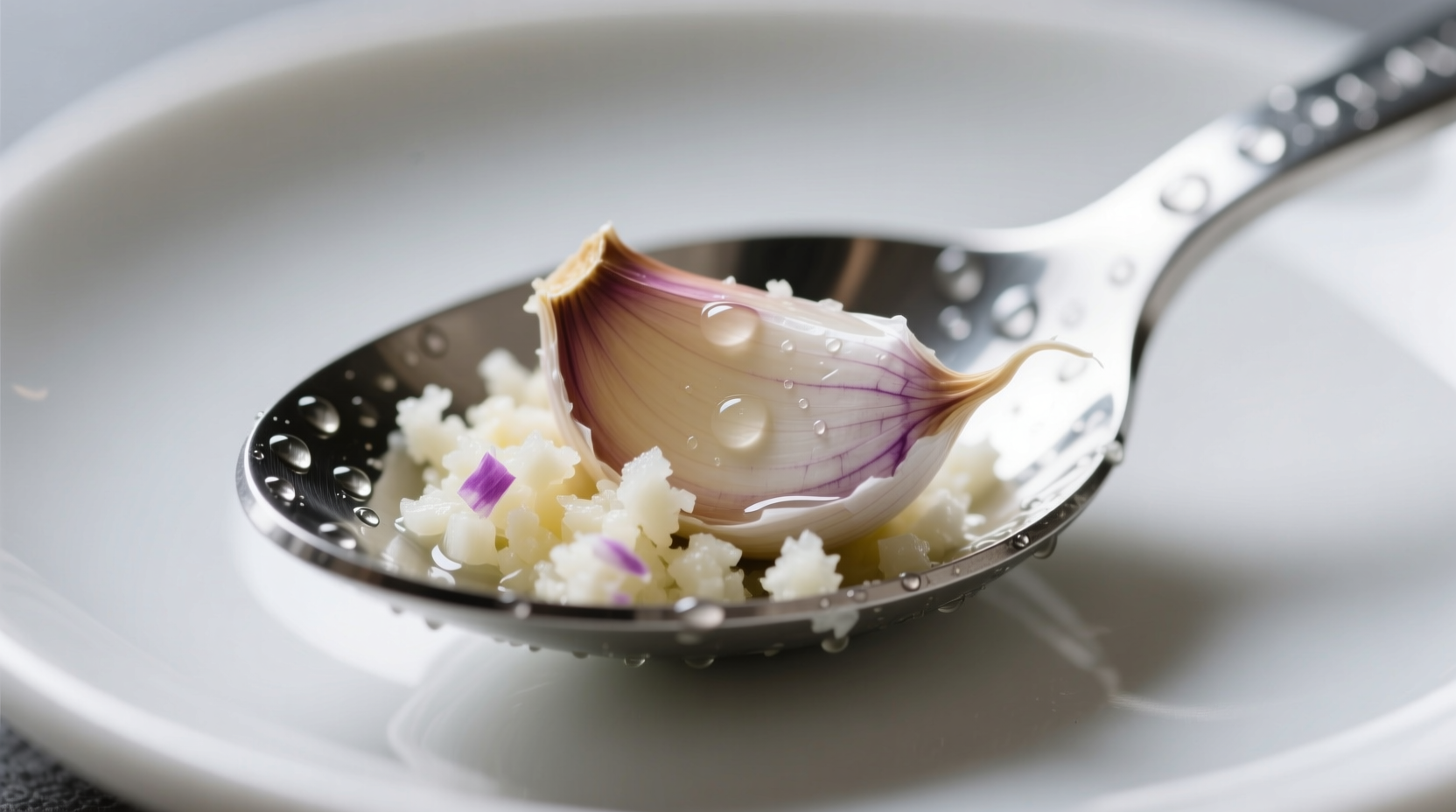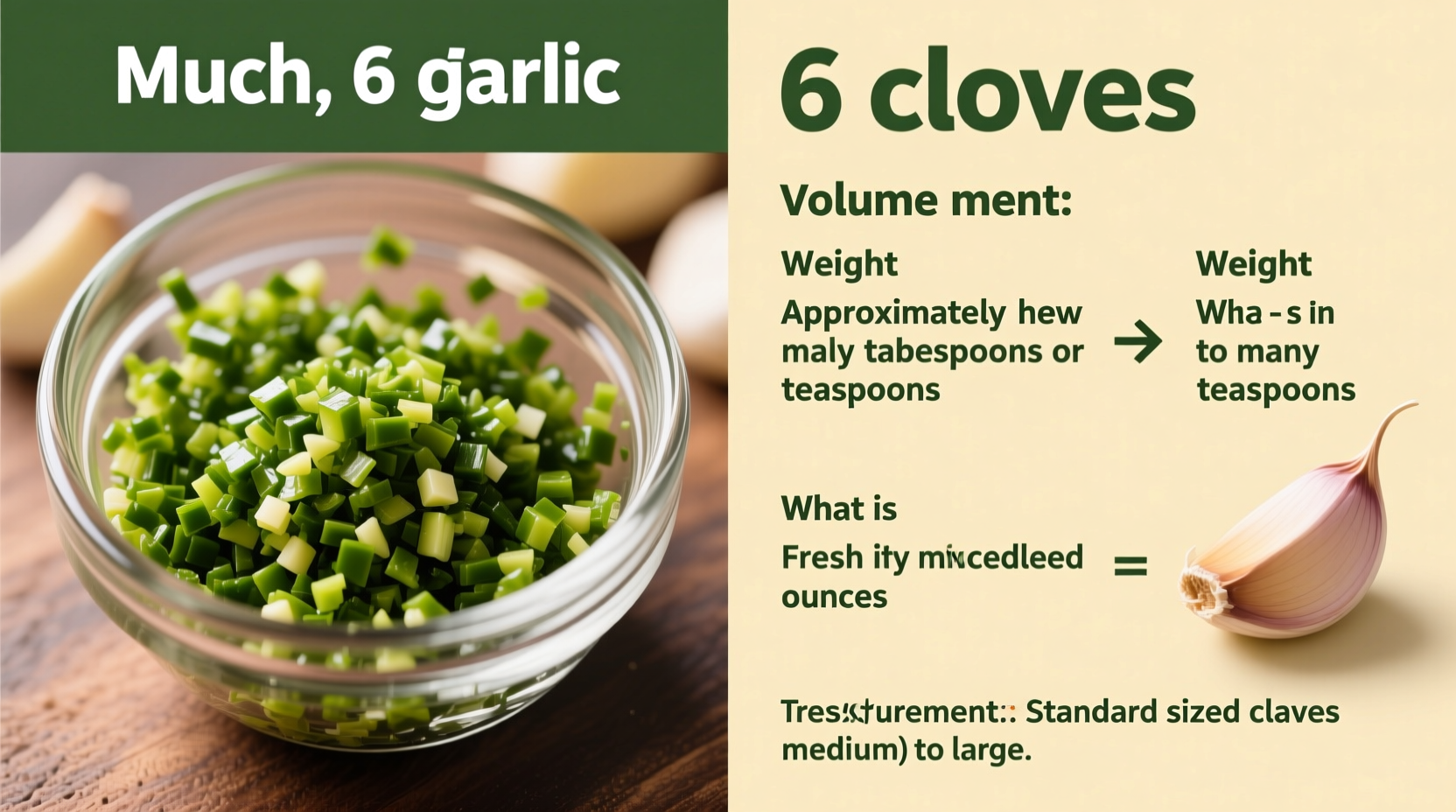Understanding Garlic Measurements for Perfect Cooking Results
Getting garlic measurements right makes or breaks your dishes. When recipes call for "6 cloves of garlic, minced," many home cooks struggle with the actual volume this represents. Understanding this conversion prevents the common pitfalls of either under-seasoning or creating an overwhelmingly pungent dish.
Why Precise Garlic Measurement Matters
Garlic's potency varies significantly between whole cloves and minced form. The enzymatic reaction that occurs when garlic is cut or crushed creates allicin, the compound responsible for garlic's distinctive flavor and aroma. This chemical transformation means 6 whole cloves deliver dramatically different results than 6 cloves properly minced.
| Garlic Form | 6 Cloves Equivalent | Weight |
|---|---|---|
| Whole cloves (medium) | 6 cloves | 18-22 grams |
| Minced garlic | 1 tablespoon (15 ml) | 8-10 grams |
| Garlic paste | 2 1/4 teaspoons | 7-9 grams |
| Dried garlic flakes | 1 1/2 teaspoons | 4-5 grams |
Practical Measurement Techniques for Home Cooks
Professional kitchens use precision scales, but most home cooks rely on volume measurements. Here's how to get accurate results without specialized equipment:
- The Spoon Method: After mincing 6 cloves, gently pack the garlic into a measuring spoon without compressing it
- Visual Reference: One tablespoon of minced garlic should fill a standard measuring spoon to the brim without mounding
- Consistency Check: Properly minced garlic should have no large chunks - aim for pieces no larger than 1/16 inch

How Garlic Size Affects Your Measurements
Not all garlic cloves are created equal. Standard medium cloves (about 1 inch long and 3/4 inch in diameter) yield the 1 tablespoon measurement. However, you'll encounter significant variation:
- Small cloves: Common in some varieties like California Early - 8-9 small cloves may equal 1 tablespoon minced
- Large cloves: Found in varieties like Elephant garlic - 4-5 large cloves may equal 1 tablespoon minced
- Storage considerations: Older garlic dries out, reducing volume by up to 20% when minced
When to Adjust Your Garlic Measurements
Culinary experts from America's Test Kitchen note that recipe measurements should adapt to these factors:
- Freshness: Newly harvested "wet" garlic contains more moisture, yielding slightly more volume when minced (source: USDA FoodData Central)
- Cooking method: Raw applications require more precise measurement than dishes where garlic cooks for extended periods
- Dish type: Delicate sauces need more careful measurement than robust stews where flavor melds over time
Common Measurement Mistakes and How to Avoid Them
Based on analysis of cooking forums and culinary school feedback, these errors occur most frequently:
- Over-packing: Pressing garlic too firmly into measuring spoons can increase volume by 30-40%
- Ignoring variety differences: Using Elephant garlic measurements for standard recipes creates imbalance
- Timing issues: Measuring garlic immediately after mincing versus after it's sat (allicin development affects perceived potency)
Storing Minced Garlic for Future Use
When you've minced more garlic than needed for a recipe, proper storage maintains quality:
- Refrigerate in an airtight container for up to 5 days
- Add a teaspoon of olive oil to prevent drying (but use within 24 hours)
- Freeze in ice cube trays for longer storage - 6-clove portions freeze perfectly
Professional Chef Tips for Garlic Measurement Precision
Chef instructors at The Culinary Institute of America recommend these techniques for consistent results:
- "Always mince garlic just before measuring - waiting even 10 minutes changes the texture and compaction"
- "For critical recipes, weigh your garlic. 6 medium cloves should weigh 18-22 grams before mincing"
- "When in doubt between measurements, start with less - you can always add more garlic but can't remove it"











 浙公网安备
33010002000092号
浙公网安备
33010002000092号 浙B2-20120091-4
浙B2-20120091-4